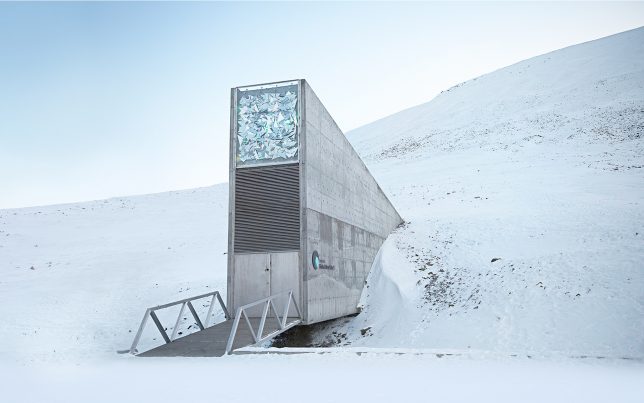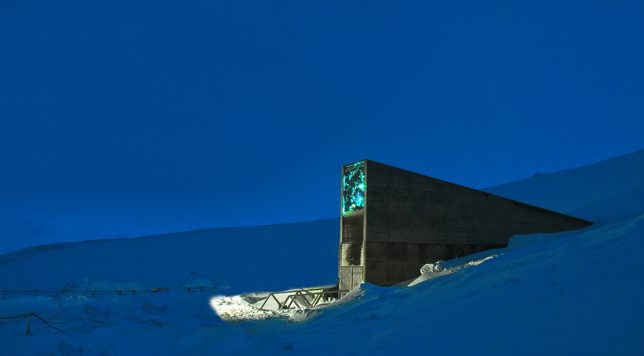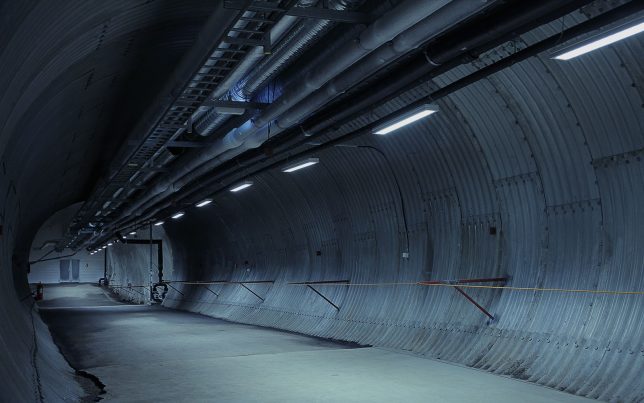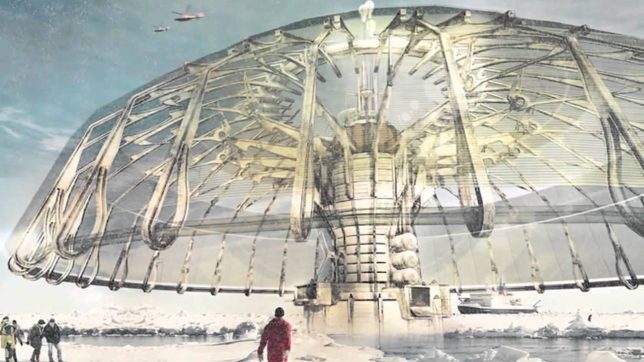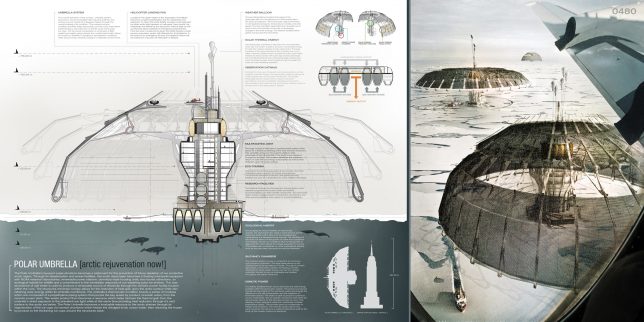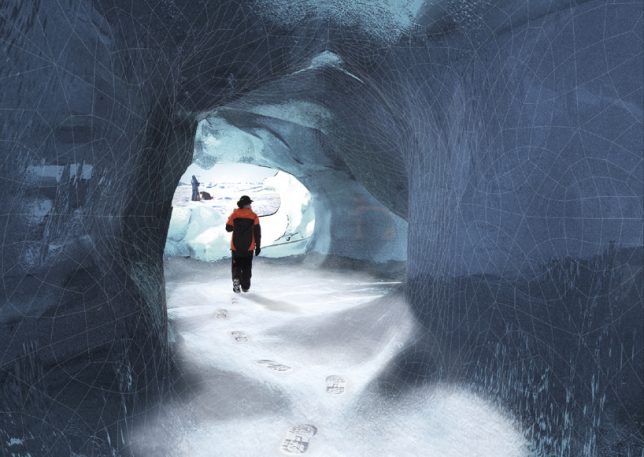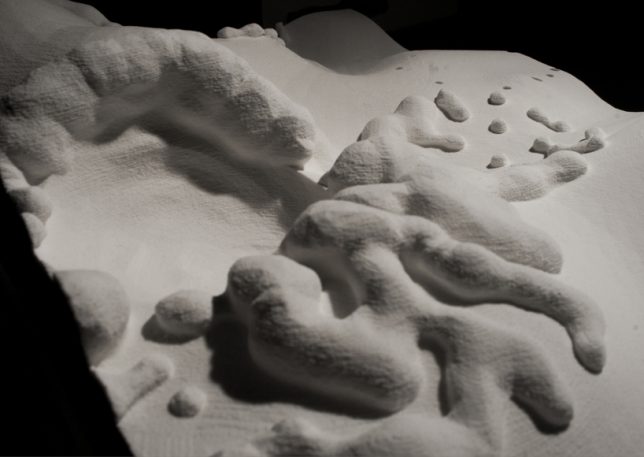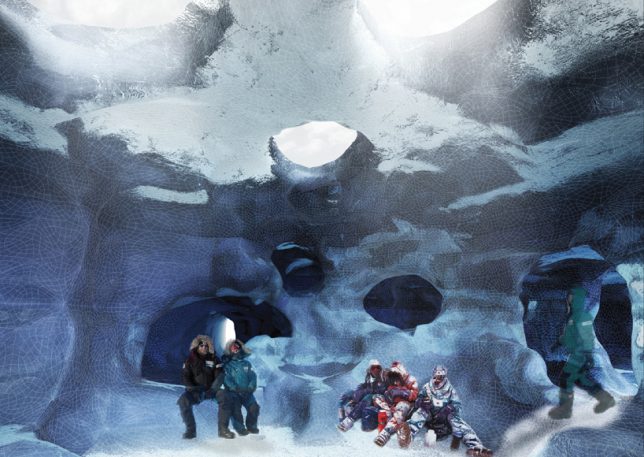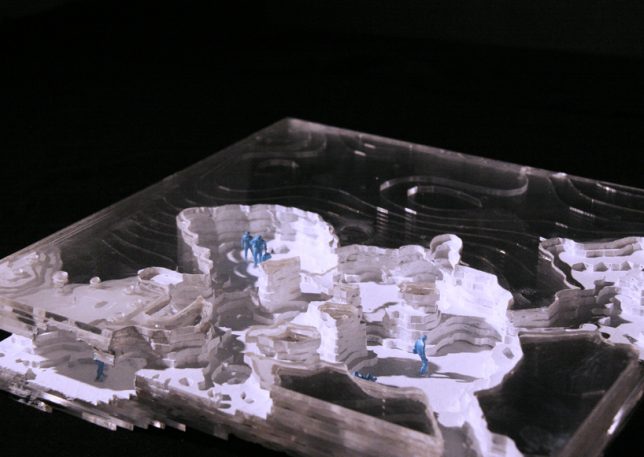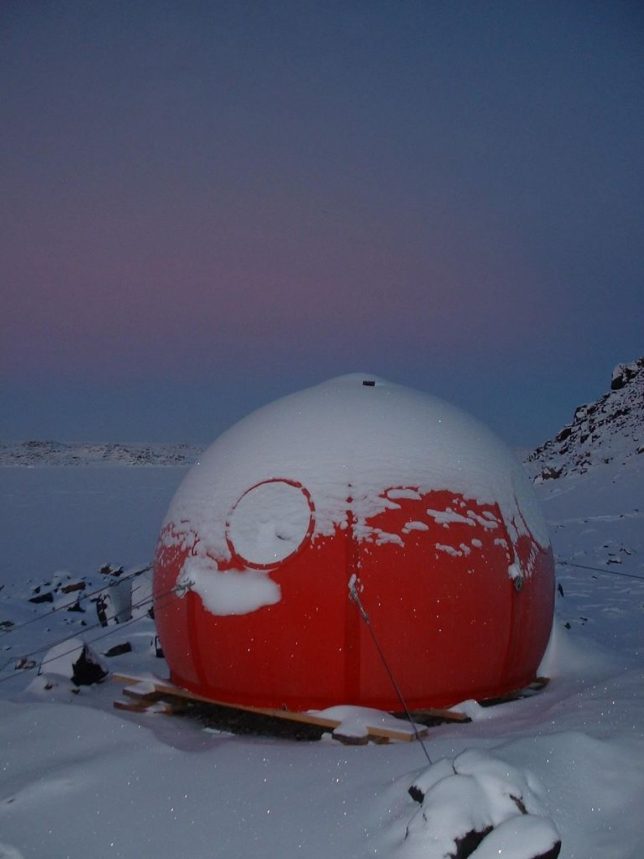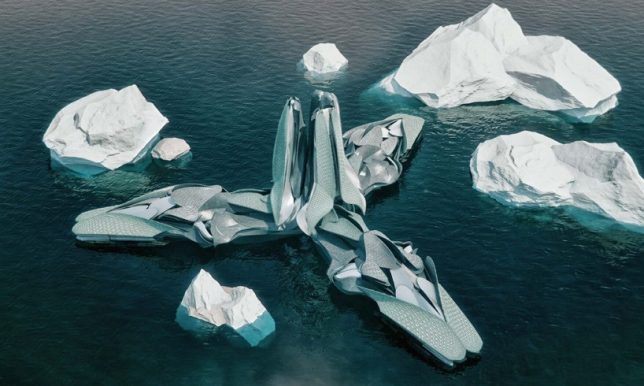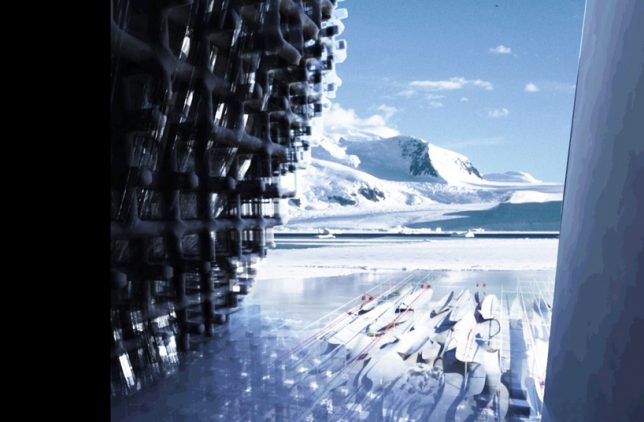Svalbard Seed Vault, Norway
Just about 12 degrees from the North Pole in the world’s northernmost non-military community, there’s a facility dubbed ‘the Doomsday Vault’ serving as the world’s largest repository of seeds. The location keeps them sufficiently chilled, insuring millions of seeds in case other genebanks are lost during large-scale regional or global crises. It’s set inside a sandstone mountain, highly secure and could potentially protect most major food crops’ seeds for hundreds or potentially thousands of years.
Polar Umbrella Arctic Skyscraper Concept
Polar Umbrella by Derek Pirozzi, winner of eVolo’s 2013 Skyscraper Competition, is a blend of architecture and technology aiming to help rebuild polar ice sheets, reducing heat gain on the arctic surface and harvesting solar energy. The structure, which looks like a giant jellyfish, is envisioned as a ‘floating metropolis’ with desalination of renewable power facilities as well as housing units, labs, tourist attractions and ecological habitats for wildlife.
Polar Ants Arctic Research Facility Concept
This arctic research facility is modeled on ant hills and underground networks of polar bear dens, making use of robots to burrow tunnels beneath the surface.The design is meant to ‘challenge the igloo’ but subtracting from the ice cap instead of adding to it, creating “self-regulating, self-contained and autonomous” polar architecture.
Igloo Satellite Cabin for Polar Researchers and Explorers
First manufactured in 1982 for the Australian Antarctic Division, Igloo Satellite Cabins have been in use for decades, used as a home base for all sorts of expeditions and tourist activities in extremely cold places. They’re made of fiberglass, many dome-shaped, all with adaptable interiors that can be used as bedrooms, laboratories, bathrooms, instrument rooms and other practical purposes. The majority of them are used in Antarctica.
Antarctic Pavilion Concept by Studio Hani Rashid
What might Antarctic architecture look like in the future? This concept by Hani Rashid envisions a dramatic self-contained system that can withstand extreme weather and the effects of climate change, and open previously uninhabitable places to human habitation as the population swells. Say the architects, “The body of work and research filling the Antarctic Pavilion is in no way advocating that we inhabit and deface Antarctica, but rather, the contrary: Can entirely new forms of architecture, planning, thinking, and making for new cities in Antarctica evolve from questions that need too e asked regarding sustainable, renewable, and zero-impact solutions, while allowing for vast populations and viable architectural solutions in the near and deep future?”
